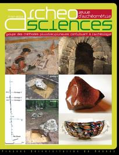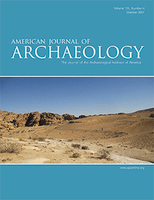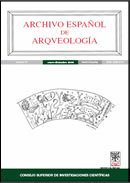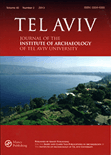
Prilozi Instituta za Arheologiju u Zagrebu
Scope & Guideline
Advancing archaeological discourse and heritage exploration.
Introduction
Aims and Scopes
- Archaeobotany and Environmental Archaeology:
The journal emphasizes studies that analyze plant remains and environmental data to understand ancient agricultural practices and ecosystem interactions. - Material Culture Studies:
Research focusing on artifacts, including pottery, coins, and tools, is a central theme, providing insights into the daily lives and economic practices of past societies. - Chronological and Spatial Analysis:
The journal publishes works that examine chronological frameworks (e.g., absolute dating) and spatial distributions of archaeological finds to reconstruct historical narratives. - Bioarchaeology and Human Remains:
There is a commitment to exploring the biological aspects of past populations through bioarchaeological studies, including human remains analysis. - Regional Archaeological Surveys and Excavations:
The journal frequently features reports on archaeological excavations and surveys, detailing findings from various sites across Croatia and the Balkans.
Trending and Emerging
- Interdisciplinary Approaches:
Recent publications indicate a rise in interdisciplinary studies that combine archaeology with other fields such as history, anthropology, and environmental science, enhancing the depth of archaeological interpretations. - Focus on Crop Cultivation and Food Production:
There is a noticeable increase in research on agrarian practices and food production systems, as seen through archaeobotanical analyses, highlighting the significance of agriculture in ancient societies. - Community Interactions and Cultural Contacts:
Emerging themes include studies that investigate interactions between different communities, particularly during transitional periods such as the Late Bronze Age and Iron Age, emphasizing cultural exchanges. - Technological Advances in Archaeology:
The incorporation of new technologies, such as remote sensing and advanced imaging techniques, is becoming more prevalent, allowing for innovative approaches to site analysis and artifact examination.
Declining or Waning
- Late Antique Studies:
While previously a focus, studies specifically dedicated to the Late Antique period appear to be declining, possibly as scholars shift towards earlier or later historical contexts. - Underwater Archaeology:
Research related to underwater archaeological sites has become less frequent, suggesting a potential waning interest or resource allocation towards terrestrial archaeological studies. - Medieval Military Archaeology:
Papers focusing on military artifacts and contexts from the medieval period are appearing less often, potentially reflecting broader trends in archaeological research prioritization.
Similar Journals

Journal of Pacific Archaeology
Unearthing Insights from the Depths of the PacificThe Journal of Pacific Archaeology, published by the New Zealand Archaeological Association, serves as a pivotal platform for disseminating cutting-edge research in the field of archaeology across the Pacific region. With an ISSN of 1179-4704 and an E-ISSN of 1179-4712, the journal provides a forum for scholarly discourse aimed at both established researchers and emerging scholars alike. Focusing on the rich tapestry of archaeological studies, it covers a diverse array of topics, from ancient settlement patterns and cultural practices to contemporary analyses of material culture. As an Open Access journal, it ensures that its findings are readily available to all, fostering inclusivity in academic research and enabling practitioners to share knowledge without barriers. The Journal of Pacific Archaeology is indispensable for those committed to understanding the complexities and nuances of Pacific archaeology, making significant contributions to both regional and global archaeological narratives.

Studijne Zvesti Archeologickeho Ustavu Slovenskej Akademie Vied
Innovating methodologies for a deeper understanding of archaeology.Studijne Zvesti Archeologickeho Ustavu Slovenskej Akademie Vied is a leading journal in the field of archaeology, published by the SLOVENSKA AKAD VIED, ARCHEOLOGICKY USTAV, based in Nitra, Slovakia. This esteemed journal, with the ISSN 0560-2793, has established itself as a vital resource for scholars and researchers, reflecting significant academic contributions in both the arts and humanities as well as social sciences. With a 2023 Scopus ranking placing it in the second quartile (Q2) for archaeology, it showcases rigorous research and innovative methodologies, essential for advancing archaeological studies. While it is not an Open Access journal, it continues to offer valuable insights into archaeological findings, theoretical frameworks, and interdisciplinary approaches. The journal serves as a bridge, connecting local Slovak archaeology with international discourse, making it an indispensable tool for students, professionals, and academics striving for a deeper understanding of the archaeological heritage of Slovakia and beyond.

ArcheoSciences-Revue d Archeometrie
Exploring New Horizons in Archaeometric ResearchArcheoSciences-Revue d Archeometrie is a prominent scholarly journal dedicated to the field of archaeology, published by PRESSES UNIV RENNES in France. With an ISSN of 1960-1360 and an E-ISSN of 2104-3728, this journal has gained recognition for its focus on the intersection of science and archaeological research, aiming to foster interdisciplinary dialogue and innovative methodologies within archaeological studies. Although coverage of the journal has been discontinued in Scopus post-2021, it has maintained a respectable standing with a Q3 Quartile ranking in both the Archaeology (Arts and Humanities) and Archaeology categories as of 2023, as well as commendable Scopus rankings in relevant fields. As an accessible platform for researchers, professionals, and students, ArcheoSciences offers valuable insights into applied techniques and findings in archaeological science, making it an essential resource for those involved in the historical and cultural analysis of material relics. Researchers are encouraged to explore this journal to stay informed about frontier research and ongoing discussions in the discipline.

AMERICAN JOURNAL OF ARCHAEOLOGY
Pioneering Research in the Heart of ArchaeologyThe American Journal of Archaeology (ISSN: 0002-9114, E-ISSN: 1939-828X), published by the esteemed University of Chicago Press, stands as a leading scholarly journal in the field of archaeology, celebrated for its rigorous peer-reviewed research. With an impressive impact factor that places it in the Q1 quartile for both archaeology and archaeology within the arts and humanities, this journal ranks among the top 15% in its field, according to Scopus metrics. It serves a global audience of researchers, professionals, and students, facilitating the dissemination of innovative findings from excavations, historical analyses, and methodological advancements. While primarily available through subscription, the journal's archives and features provide invaluable resources for deepening one's understanding of the past and engaging with current archaeological discourse. Operating from its home in Chicago, USA, the American Journal of Archaeology actively contributes to the advancement of knowledge and scholarship in archaeology, making it an essential platform for those invested in the exploration of ancient civilizations and cultural heritage.

Annales Instituti Archaeologici
Pioneering Research that Illuminates Our Ancient HeritageAnnales Instituti Archaeologici is a distinguished journal published by INST ARHEOLOGIJU, dedicated to advancing research in the field of archaeology. With an ISSN of 1845-4046 and an E-ISSN of 1848-6363, this journal serves as a vital platform for the dissemination of innovative archaeological studies and findings, reflecting the evolving trends and methodologies in this fascinating discipline. Based in Croatia, the journal captures a global audience, emphasized by its Q3 ranking in both Archaeology categories as per the latest 2023 metrics, indicating a solid presence in the academic landscape. Although it does not currently offer Open Access options, its impactful contributions are recognized through its Scopus ranks, where it stands at #137/413 in Archaeology related to Arts and Humanities and #135/354 in Social Sciences. Researchers, professionals, and students interested in the latest archaeological research and its applications will find Annales Instituti Archaeologici to be an invaluable resource, promoting knowledge and fostering scholarly communication within the archaeological community.

Archivo Espanol de Arqueologia
Discovering the past, shaping the future of archaeology.Archivo Español de Arqueología is a prestigious journal published by the Consejo Superior de Investigaciones Científicas (CSIC), dedicated to the field of archaeology and the historical sciences. Since its transition to Open Access in 1991, this journal has been a significant resource for scholars and practitioners in Spain and beyond, ensuring the dissemination of high-quality research to a broad audience. With an impressive Scopus ranking that places it within the top 20% of journals in the disciplines of History and Archaeology, Archivo Español de Arqueología plays a crucial role in advancing academic discourse and promoting innovative archaeological methodologies. The journal has maintained rigorous standards, reflected in its placement within the Q2 and Q3 quartiles, enabling it to establish a reputation for excellence and reliability in archaeological scholarship. Researchers, professionals, and students are encouraged to explore the journal's diverse array of articles from its foundation year of 2009 to the present, enriching their understanding of the past through the latest findings and theoretical advancements in archaeology.

Revista de Arqueologia Historica Argentina y Latinoamericana
Innovative Insights into the Archaeological Treasures of Latin AmericaRevista de Arqueologia Historica Argentina y Latinoamericana is a vital scholarly journal dedicated to the field of archaeology, with a particular focus on the historical dimensions of Argentina and Latin America. Published by the Assoc Professional Archaeologists Argentine Republic, this open-access journal has been enriching the archaeological discourse since 2007, making its valuable content freely accessible to researchers, professionals, and students around the globe. With an ISSN of 1851-3190 and an E-ISSN of 2344-9918, the journal aims to foster a deeper understanding of the archaeological heritage of the region by publishing innovative research articles, critical reviews, and methodological advancements in the study of historical archaeology. Positioned as a prominent platform for scholarship, it plays a crucial role in advancing archaeological knowledge while promoting interdisciplinary approaches within the field.

OLBA
Empowering Researchers to Discover the UnseenOLBA is a distinguished journal in the field of archaeology, published by Mersin University Publications Research Center Cilician Archaeology in Turkey. With an ISSN of 1301-7667, this academic journal has been a platform for scholarly discourse from 2009 to 2014 and again from 2016 to 2019, with a recent volume published in 2022. Although it is currently categorized in the fourth quartile (Q4) for both Arts and Humanities and Social Sciences within archaeology, OLBA continues to contribute significantly to the global archaeology community. It serves as an essential resource for researchers, professionals, and students interested in the diverse aspects of archaeological studies and cultural heritage. Despite not being an open-access journal, OLBA strives to disseminate knowledge effectively, aiding in the exploration of ancient civilizations and the rich tapestry of human history. Its Scopus rankings, placing it in the bottom percentiles, demonstrate the ongoing need for the community to support and engage with the journal to enhance its visibility and impact in the archaeological domain.

Tel Aviv-Journal of the Institute of Archaeology of Tel Aviv University
Connecting Researchers, Enriching UnderstandingTel Aviv-Journal of the Institute of Archaeology of Tel Aviv University, published by Routledge Journals, Taylor & Francis Ltd, stands as a premier academic publication in the fields of archaeology, cultural studies, and history. Established in 1974, this journal has significantly contributed to archaeological scholarship and fosters a rich dialogue among researchers and practitioners worldwide, particularly in the context of the Middle East. With a remarkable Q1 ranking in multiple categories, including Archaeology and Cultural Studies, it is recognized for its high-quality, impactful research. The journal's audience consists of academics, professionals, and students eager to explore new findings and interdisciplinary approaches. While it does not operate under an open-access model, its scholarly articles are pivotal for advancing knowledge and understanding in archaeology and related fields, thus continuing its legacy as a vital resource for cutting-edge research up to 2024.

Archeologicke Rozhledy
Unveiling the past through innovative research and dialogue.Archeologicke Rozhledy, published by the Academy of Sciences of the Czech Republic, Institute of Archaeology, is a pivotal open-access journal dedicated to advancing the field of archaeology. Since transitioning to open access in 2019, it has made significant strides in disseminating high-quality research, serving as a vital resource for researchers, professionals, and students alike. With an ISSN of 0323-1267, the journal has gained recognition for its contributions in the domains of arts and humanities, particularly archaeology, as evidenced by its 2023 Q2 ranking in both categories. Operating out of the historical city of Prague, the journal encompasses a broad scope of archaeological scholarship, reflecting a commitment to interdisciplinary approaches and fostering dialogue within the global archaeological community. With its notable Scopus rankings—#115/413 in Arts and Humanities and #113/354 in Social Sciences—Archeologicke Rozhledy stands as a crucial outlet for innovative research and scholarly exchange.